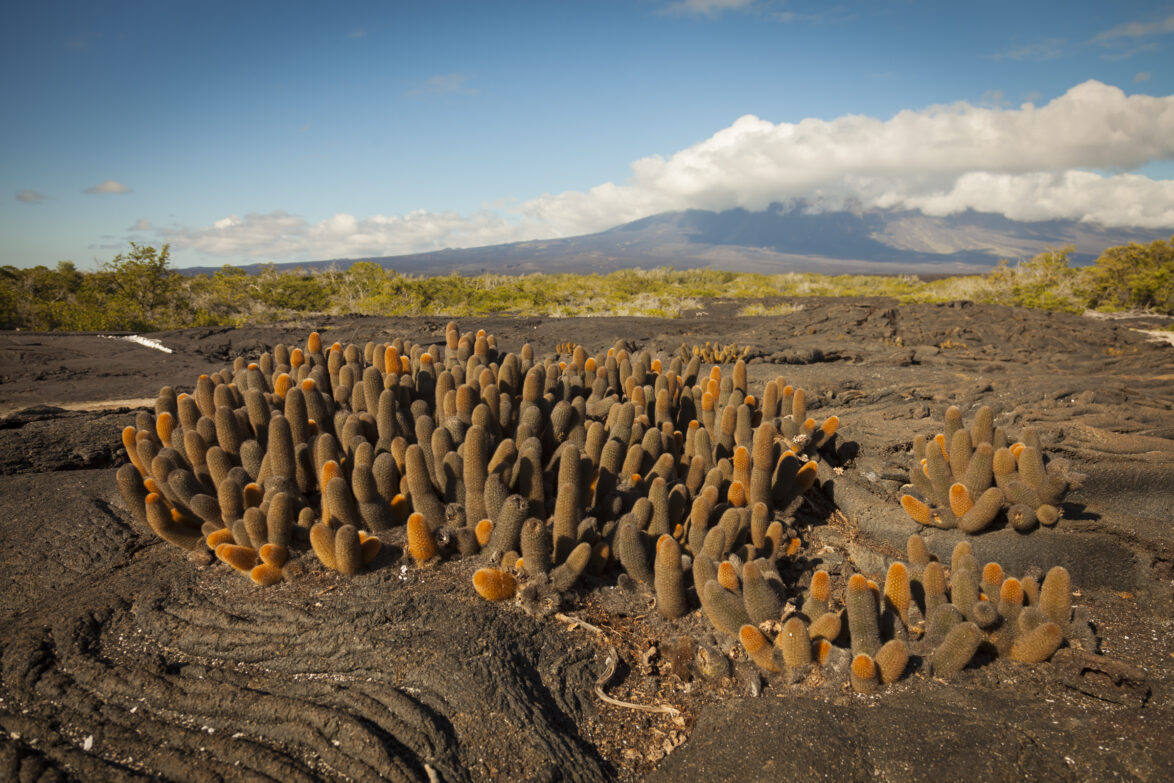
Island overview
Fernandina is situated in the west of the Galapagos Archipelago, across the Bolívar Channel from Isabela. The island was named in honour of King Ferdinand of Spain, who, together with his wife Queen Isabella, sponsored the first voyage of Christopher Columbus in 1492.
Fernandina has an almost completely pristine environment with just one visitor site, Punta Espinosa, a narrow spit of land in the northeast corner of the island.
Fernandina consists of a central volcano and caldera, an extensive lava field and a few vegetated areas that are mainly made up of cacti and mangroves. Since the establishment of the Galapagos National Park, there have been more than a dozen recorded eruptions, most recently in 2020, with some of them lasting for several days. Extraordinary lava formations are abundant across the island, and this sporadic volcanic activity and harsh volcanic landscape gives the island a dramatic backdrop.

Due to the cold, upwelling waters of the Cromwell Current, the seas surrounding Fernandina and western Isabela are the richest waters in the Archipelago in terms of nutrients and sea life. Fernandina is a prime birding spot where it is possible to see herons and egrets foraging among the mangrove roots and Galapagos penguins swimming along the shores. Flightless cormorants also live on Fernandina and are often spotted perched on rocks with their ragged wings outstretched in the sun.
The cold ocean current produces lush, thick seaweed, the main component of the marine iguana’s diet. This has allowed the iguanas on Fernandina to become the largest in the archipelago. The island also has the largest land iguana population per square mile in Galapagos. The land iguanas nest both on the rim of the caldera and in its depths.
Wildlife highlights


Galapagos land iguana

Flightless cormorant

Galapagos penguin
Conservation challenges
Fernandina is frequently monitored for invasive species as it is one of the only two larger islands (along with Genovesa) that have never been affected by introduced mammals such as rats, which have devastated endemic species elsewhere in Galapagos. The other potential threat to the flora and fauna is from invasive plant species such as blackberry, lantana shrubs or guava shrubs, which could out-compete the native vegetation.


